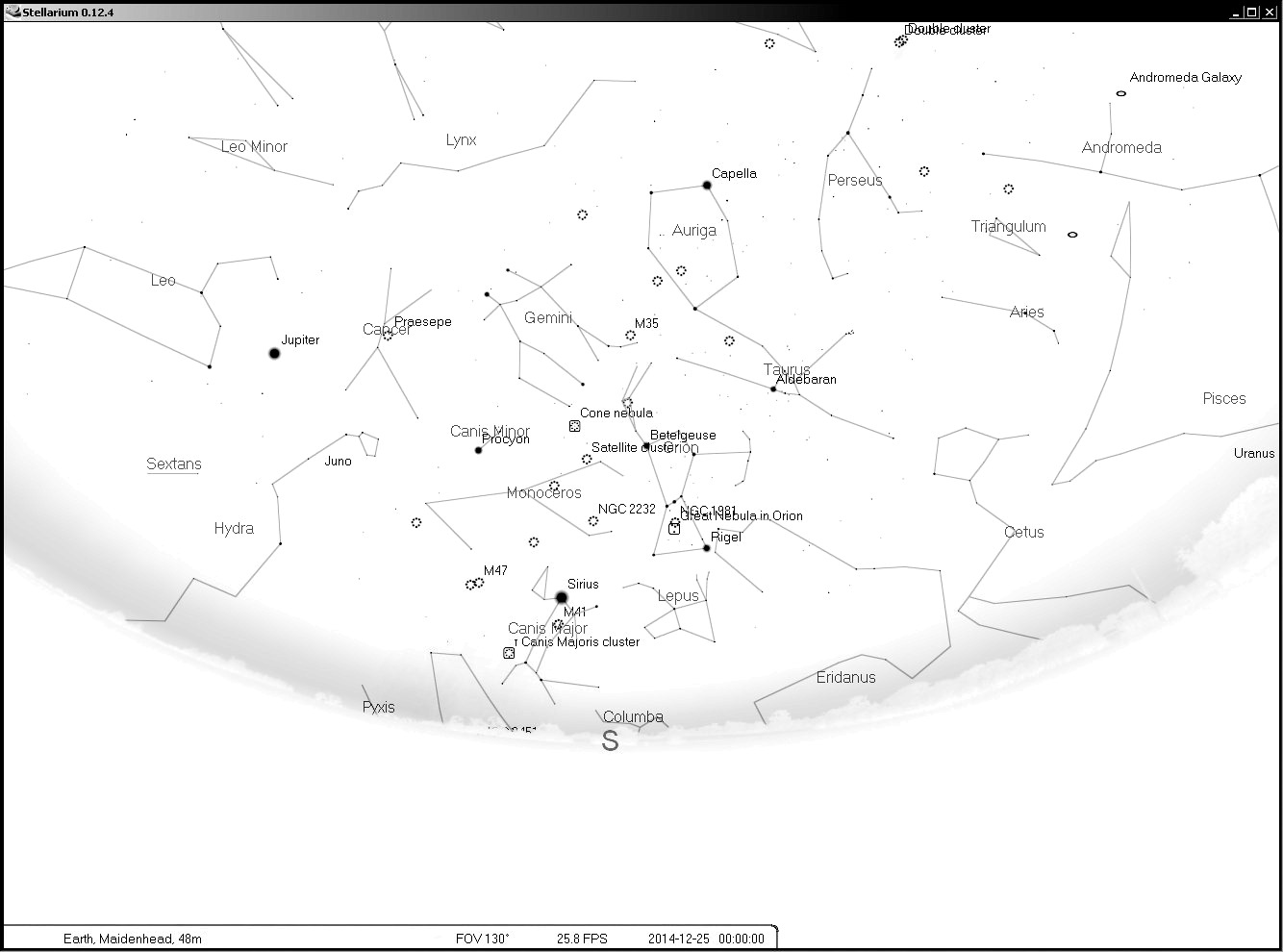What's in the night sky this month ?
The 'fixed' stars will appear in the same locations year after year (note 1). Some astronomical events - such as meteor showers - also repeat from year to year (even if the 'peak' date of a meteor shower varies somewhat) whilst other astronomical objects, such as the planets and Comets, have orbital periods that don't follow Earth's annual cycle at all. So these pages focus on the main Constellations, whilst other events can be found on the Events page
Note 1. In fact, due to the precession of the Earths axis, positions of the Constellations don't repeat exactly from one year to the next. Fortunately, in the context of "What's in the sky this month ?", this 'slippage' (which is 1 degree every 71.6 years) can be ignored (it taking 25,772 years to complete one revolution). So, if this had been written down some 2,200 years ago, at the time when the 'Sun signs' were defined, everything would have 'shifted' by some 30 degrees (or one 'Zodiac' constellation) and these pages would make as much sense today as that Astrology nonsense :-)
Running the Stellarium scripts (.ssc)
Our monthly sky Stellarium 'scripts', {date}-WhatsOn.ssc, were designed to run with Stellarium V10.1 but should 'work' with almost any version. To run the scrip on your own computer, start by downloading the script = 'right click' the link and use 'Save link as'. Next drag the .ssc file to the to the '\scripts' sub-directory of the installed Stellarium program directory (i.e. C:\Program Files\Stellarium\scripts).
To run the script, launch Stellarium, open the 'Configuration' menu dialog and go to the 'Scripts' tab. A list of available scripts will be shown in the list box on the left side. You select a script by clicking on it as usual and details (about that script) will then be shown in the panel on the right side. To run the selected script, click the 'run script' button (the icon that looks like a DVD player 'Play' button). For more Stellarium scripts, visit the Stellarium.org/wiki page
Note, before running a script it's a 'good idea' to disable the on-screen 'information' (Configuration, Information tab, set 'Selected Object information' = 'none')
(-) 12 December
Meteors this month
The Geminids, peak for 2021 will likely be on the night of Monday 13/14th although they should be visible from Dec 7-16 with the best rates likely to be seen during around 2am on Tuesday 14th. This year, a waxing gibbous moon will be above the horizon during peak time for viewing. But it will set shortly afterwards, leaving the sky dark for watching meteors, especially from 3am to dawn. The radiant is above the horizon all night and highest in the sky at about 2am.
The Geminids are the shower that produce the highest reliable rates each year and only lose out in popularity to the Perseids due to the colder December nights ! Recent years have peaked at over 100/Hr and remain above 70/Hr for about 24 hours.
Unlike other meteor showers, which are due to comet debris, the Geminids are from the rocky asteroid 3200 Phaethon - so single bright meteors rather than a sequence (or 'train') that an icy comet would generate.
The Ursids shower is active annually between December 17 and December 23. The shower usually peaks around December 21. At its peak, observers may be able to view as many as 10 meteors in an hour. The shower is named the Ursids because the meteors seem to radiate from the direction of the constellation Ursa Minor in the sky. The Ursids are associated with the comet, 8P/Tuttle, also sometimes known as Mechain-Tuttle's Comet.
 The sky (looking South) this month.
The sky (looking South) this month.
(click the sky map, right, for a larger view)
The Stellarium script(s) presented at our meeting can be downloaded (using 'right click' and 'Save link as') :-
December 2014
December 2015
(note = scripts are built for Stellarium 10.4)This note last modified: 6th Dec 2021 09:18.